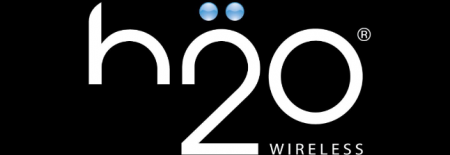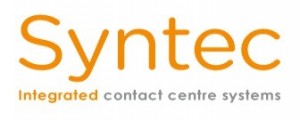Locus H2O Wireless removes PCI risk from omni-channel contact centre
A four week integration with TokenEx cloud tokenisation and Syntec’s CardEasy keypad payment by phone

Contact centres with human agents that accept payment card information must conform to the highest levels of the PCI Data Security Standard (DSS) — an expensive, time-consuming and ongoing process. However, by removing all payment card information from the conversation between customers and live or automated agents, re-routing the sensitive data out of internal business systems, and storing only tokenised data, PCI compliance can be greatly reduced and the call centre secured from data attacks.
The challenge facing H2O Wireless
H2O Wireless provides its customers with pre-paid cellular services, both through direct and indirect sales. Customers choose a plan that meets their data, text and voice needs and pay a set monthly fee, with no contract or hidden fees. Tech-savvy customers can use the web portal or IVR, or new customers can get personal help from an agent. In all these channels customer payment and personal information is captured by human or software systems, stored and reused as needed. The organisation processes over 350,000 transactions a month, 3.6 million transactions every year, and this number is increasing.
Locus has bespoke CRM and back-office financial systems tailored to meet its business needs. These specialised systems process all payment and customer account data for multiple business units including H2O. Since human agents were exposed to the incoming sensitive data, keeping these on-premise systems and the contact centre in compliance with PCI DSS was a massive effort. New Euro-zone data privacy regulations such as GDPR require even more security over personal information for international organisations.
H2O’s key objective was to keep the sensitive data from entering its systems, but without having to altering the existing IT applications.
Carlos Moreno, Payment and Fraud Analyst, Locus Telecommunications commented,
“Even though we were using very strong encryption models to protect the payment and personal information, it was still passing through and being managed by our systems. Critically, our human agents in the contact centre were being exposed to payment account numbers over the phone, creating a tricky PCI compliance problem. We needed to get rid of that step as well.”
“There were two important components to the project. Number one was making sure that we are able to obtain and maintain PCI compliance by reducing the scope of payment acceptance as much as we could. And number two, perhaps more importantly, was to make sure that we are actually securing the personal account information of our customers so that in the event of a breach or a cyber-attack, that information is stored outside of our environment where it cannot be accessed.”
The first step of reducing the scope of PCI compliance entailed choosing a security platform that could not only provide the necessary tokenisation of payment data before it entered H2O Wireless systems, but vault it off-premise. The most critical requirement however, was to find a tokenisation vendor that could integrate with the existing H2O Wireless systems and business processes and require very minimal changes to them. The TokenEx Cloud Security Platform fitted the bill.
The TokenEx Cloud Security Platform is a flexible and open solution which intercepts payment data, turns sensitive data into tokens (the tokenisation process), and stores the real data, personal or payment, in secure cloud data vaults. Tokens are returned to the client’s systems to be used for payment processing and account management. This means that sensitive data is never accepted, stored, or transmitted by the client’s internal business systems. In this way, business processes continue functioning as usual using tokens and, should a breach occur, no sensitive data is exposed. As a result, the scope of PCI compliance is greatly reduced to a few PCI DSS self-assessment questionnaire points, at a much lower cost and overhead.
Diverting incoming payment card data to the cloud with Syntec CardEasy
However, to reduce PCI compliance requirements to the absolute minimum, there still remained the initial receipt of PANs through the contact centre via a live agent or the IVR system. The existing system let customers enter their payment information through DTMF (dual tone multiple frequency or touch-tone signalling) keypads on landline or mobile phones, but the human agent was still on the line and could conceivably intercept the PAN. Likewise, with the IVR the PAN was still being received and decoded from the DTMF signals and recorded in the contact centre system. This process keeps the contact centre in scope for PCI compliance and is difficult to monitor.
TokenEx could not intercept the incoming DTMF signals and tokenise them directly – they had to be digitised first using Syntec’s patented CardEasy keypad payment by phone DTMF system. CardEasy can be deployed as a cloud service, integrating with the TokenEx cloud platform, to ensure that payment card numbers never enter the contact centre environment.

“We chose Syntec because they had the solution that we needed to de-scope our live contact centre agent and IVR environment. Syntec was the only vendor that provided the flexibility to integrate with our home-grown systems because their system can be cloud-based, with no requirement to change any of our existing IT. The same flexibility offered by TokenEx was offered by Syntec.”
Carlos Moreno summarises the success of the project with two quantifiable and significant savings.
“One of the biggest savings is something that we were able to quantify from the very beginning — that we could keep our homegrown systems as they are. We didn’t have to spend any effort or funding to integrate something new or change our payment strategy. We’re talking about potential savings over nearly half a million dollars if we had to purchase just a new CRM system—not even counting the manpower and time it would take. Looking at savings for PCI compliance, if we had to create our own PCI Island with separate servers and databases to isolate the contact centre, the hardware costs alone would be onerous. Being able to work with TokenEx and Syntec to become PCI compliant with no changes to our operations and IT infrastructure is a huge benefit. Doing so in four weeks is really a great way to measure success.”

For additional information on Syntec view their Company Profile



